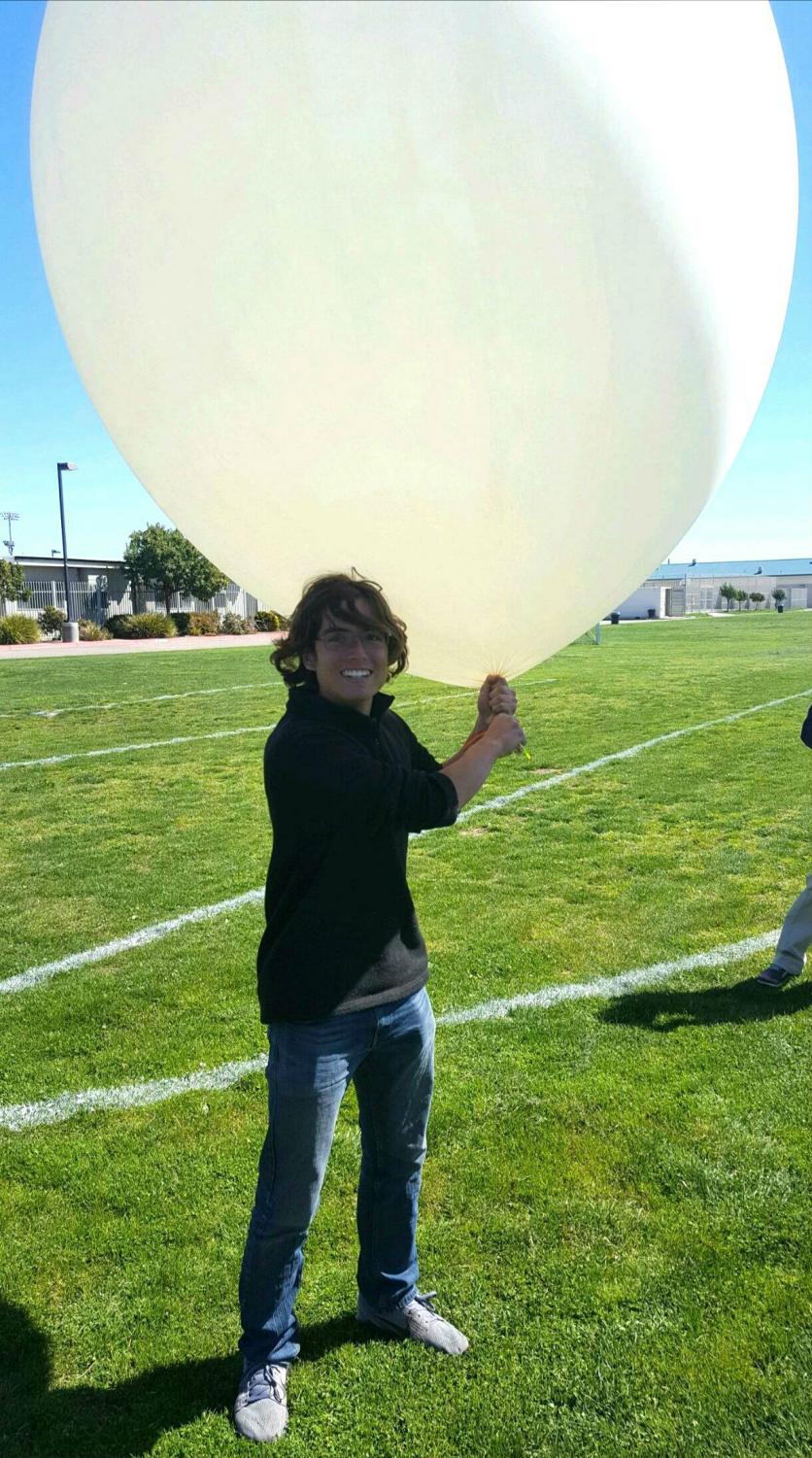Balloon Launch at PV
 “One! Two! Three! Go!” The cream-colored mass floats up into the great blue sky. Pairs of eyes follow the drifting figure as it makes its way from the troposphere to the stratosphere.
“One! Two! Three! Go!” The cream-colored mass floats up into the great blue sky. Pairs of eyes follow the drifting figure as it makes its way from the troposphere to the stratosphere.
Mr. Magni’s Environmental Science students watched the launch of a PG&E weather balloon from the PVHS back field with PG&E John Lindsey and Steve Kliewer and joined by Principal Herrera on Tuesday, March 28.
The balloon is made out of Latex rubber, a biodegradable flexible material and filled with helium gas. Similar to birthday balloons, once released the balloon is carried through the air by wind currents until reaching a more stable altitude. Typically a weather balloon is released with a transmitter called a Radiosonde that transmits information back to a receiving center about atmospheric temperature, pressure, dew point temperature and GPS coordinates of wind. Students witnessed a similar version focusing on the changes of wind currents in the different layers of the atmosphere and how they affect flight patterns.
Have you ever seen the condensation trails left after the passing of an aircraft, or seen a strange plane passing over your house and wondered what type of plane it is? You can always go online onto http://planefinder.net and learn what time a flight is passing over any area and the aircraft type.
Each student had the chance to hold the weather balloon as it swung around in the wind and bounced playfully against heads. The final let go was done by Jose Garcia, senior, who was enlightened and surprised at the balloon’s insistence to stay on the ground.
While in the troposphere, the lowest zone of the atmosphere, the balloon traveled quickly in one direction. Then when entering the stratosphere, the layer above the troposphere, it shifted in a completely different direction, until it was no more than a tiny speck in the distance. The balloon will ascend to 100,000 feet before the cold air causes the rubber to burst and the stringy pieces of material to rain down safely.
